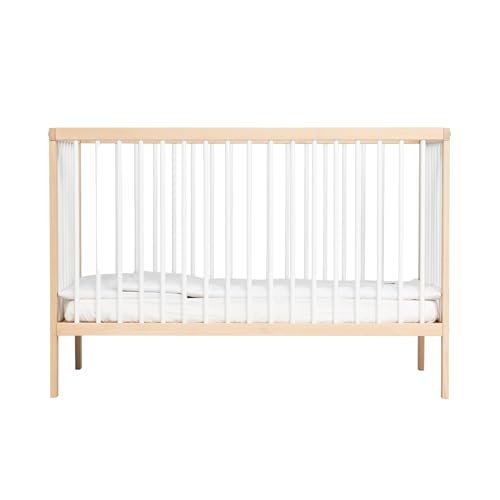
Good Cribs
Add a review FollowOverview
-
Founded Date June 17, 1981
-
Sectors Hardware and Networking
-
Posted Jobs 0
-
Viewed 56
Company Description
15 Documentaries That Are Best About Baby Cot To Bed
Transitioning from Baby Cot to Bed: A Comprehensive Guide for Parents
The journey from a baby cot to a bed marks a substantial milestone in a kid’s development. It signifies self-reliance and a step toward maturing. Nevertheless, this shift can frequently be daunting for both parents and children. Understanding the procedure, the right timing, and how to make the shift smoother can significantly help in this journey. This short article checks out the important to think about when transitioning your child from a cot to a bed, consisting of typical FAQs, tips, and a structured strategy to make sure the process is as smooth as possible.

Why Transition from a Cot to a Bed?
Developmental Milestones
Transitioning to a bed is typically triggered by several factors:
-
Physical Growth: As kids grow, they outgrow their cots. The average size for a convertible cot is typically indicated for babies up to 3 or 4 years old.
-
Cognitive Development: As young children end up being more curious and conscious of their surroundings, they might try to climb out of their cots, posturing security dangers.
-
Potty Training: Once a kid is potty trained, they may require easier access to the restroom, which a bed can assist in.
-
Brother or sisters: The arrival of a new sibling can also demand this shift, as the cot might require to be released up.
When to Make the Transition
There is no one-size-fits-all answer to when a child need to shift from a cot to a bed. However, here are some signs that it might be time:
- Climbing Out: If the child is attempting to climb up out often.
- Age Consideration: Many specialists recommend this transition around the age of 2 to 3 years, although every kid is distinct.
- Need for Independence: Children might reveal a desire for a big-kid bed.
Types of Beds Suitable for Toddlers
Not all beds are created equal when it concerns young kids. Here’s a breakdown of appropriate bed types:
| Bed Type | Description | Pros | Cons |
|---|---|---|---|
| Young child Bed | Smaller sized, lower to the ground, often with side rails. | Size-appropriate for toddlers; stability. | Minimal lifespan as they grow out of rapidly. |
| Single Bed | Standard size bed meant for older kids. | Lasts longer; can be used for many years. | May be too huge for a toddler; risk of falling. |
| Convertible Crib | Crib that transforms into a young child bed. | Versatile; saves money in the long run. | Can be pricey; some might not use full-sized alternatives. |
| Loft Bed | Raised bed with area below for play or storage. | Optimizes space; enjoyable for kids. | Not appropriate for extremely children; safety concerns. |
Actions to Transition Smoothly
Transitioning to a bed can be made easier with cautious preparation. Here’s a detailed guide:
1. Prepare the Space
- Select a Location: Decide where the bed will be put.
- Childproof the Room: Since young kids are naturally curious, guarantee that furniture is steady, sharp edges are covered, and dangerous products run out reach.
- Keep Familiar Items: Retain preferred toys and bed linen to offer convenience in the new environment.
2. Introduce the Bed
- Involve Your Child: Let your kid aid pick out their bed or bedding to create enjoyment.
- Discuss the Transition: Make them understand that they are becoming a huge kid by having a big-kid bed. Usage motivating language.
3. Make the Swap
- Bedtime Routine: Keep the bedtime routine consistent. This creates familiarity and convenience during the shift.
- Assistance: Offer them reassurance but avoid being extremely protective; it’s crucial to motivate independence.
4. Address Fears and Concerns
- Speak about Fears: Children may have fears of falling or the dark; discuss these freely.
- Reinforce Safety: Use guard rails on the bed at first and describe what to anticipate throughout the night.
5. Screen and Adapt
- Be Patient: It might take some time for your kid to adjust completely.
- Stay Consistent: Maintain the nighttime routine, even when troubles develop.
FAQs Regarding Transitioning from Cot to Bed
Q1: How long does the transition from a Cheap Cot bed to a bed typically take?
A1: The shift can differ substantially amongst kids– ranging from a few days to a few weeks– as they adjust to oversleeping a brand-new space.
Q2: Should I buy an unique young child bed?
A2: Investing in a toddler bed can make the transition much easier since they are developed with security in mind; nevertheless, if you choose to go directly to a single bed, that can work too with the best safety procedures.
Q3: What if my kid keeps rising?
A3: This is normal! Encourage them to remain in bed and establish favorable support by rewarding them for remaining in bed through the night.
Q4: Is it alright to transition to a big bed too early?
A4: Transitioning too early can lead to sleep disruptions. It’s necessary to evaluate the preparedness of the kid based on their indications and advancement.
Transitioning from a baby cot to a bed is a considerable step for both kids and moms and dads. With thoughtful preparation and understanding of the child’s needs, parents can make the shift smoother and more satisfying. By acknowledging when to make the transition, understanding the kinds of beds available, and preserving a constant routine, moms and dads can alleviate fears and promote a sense of security for their kid throughout this interesting brand-new chapter. Ultimately, every child is different, and persistence is crucial in making this journey a positive experience.

